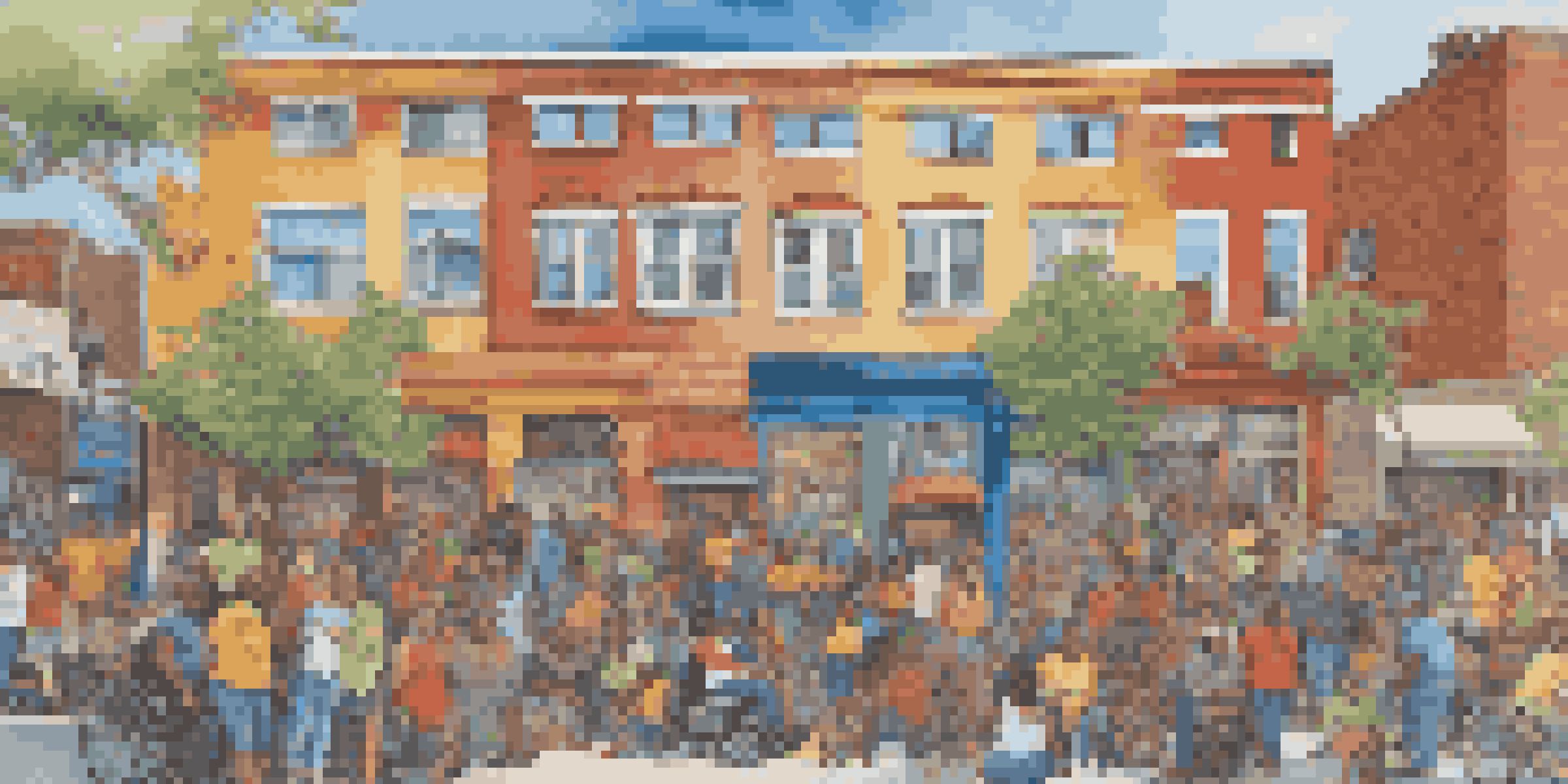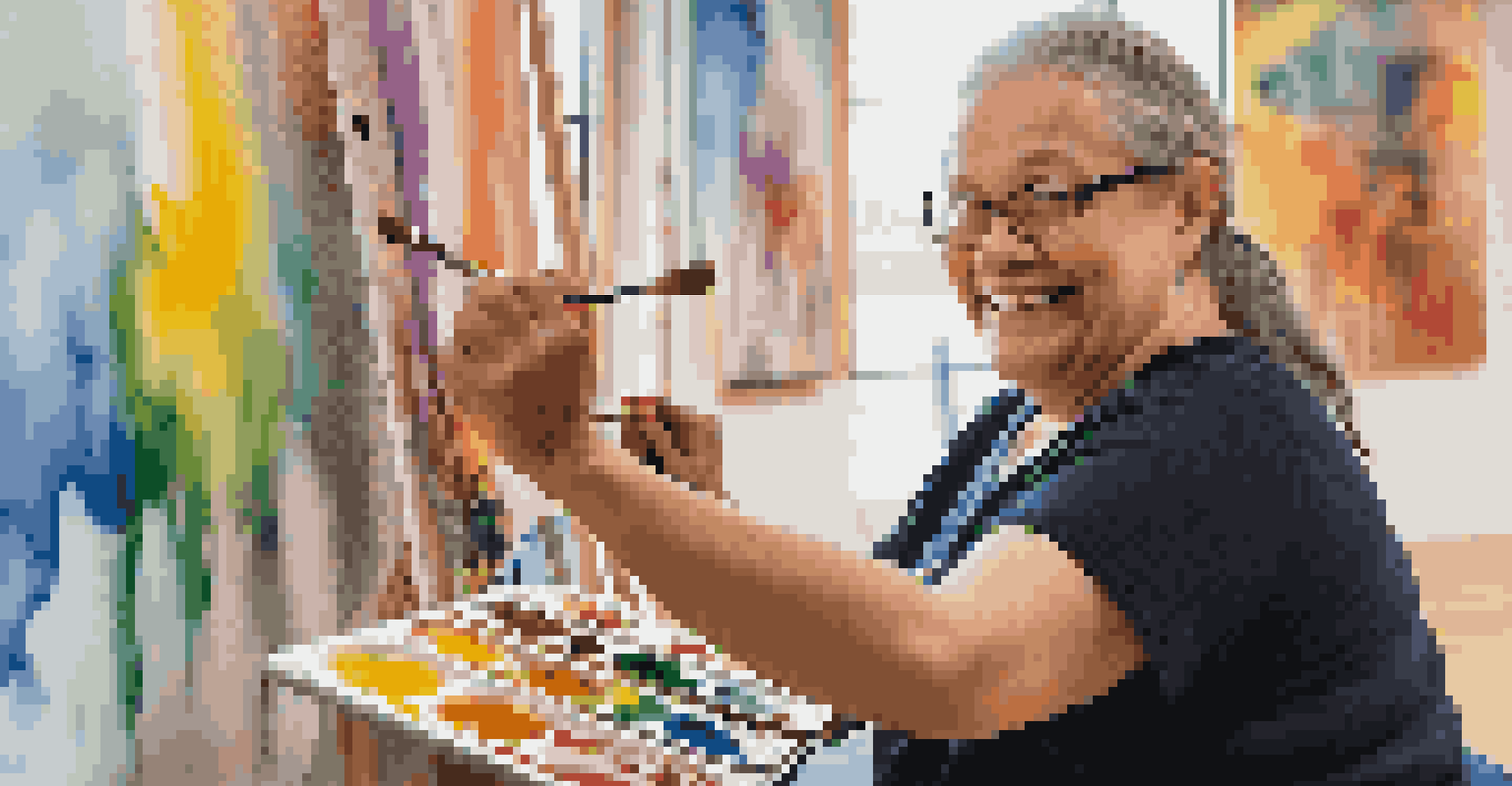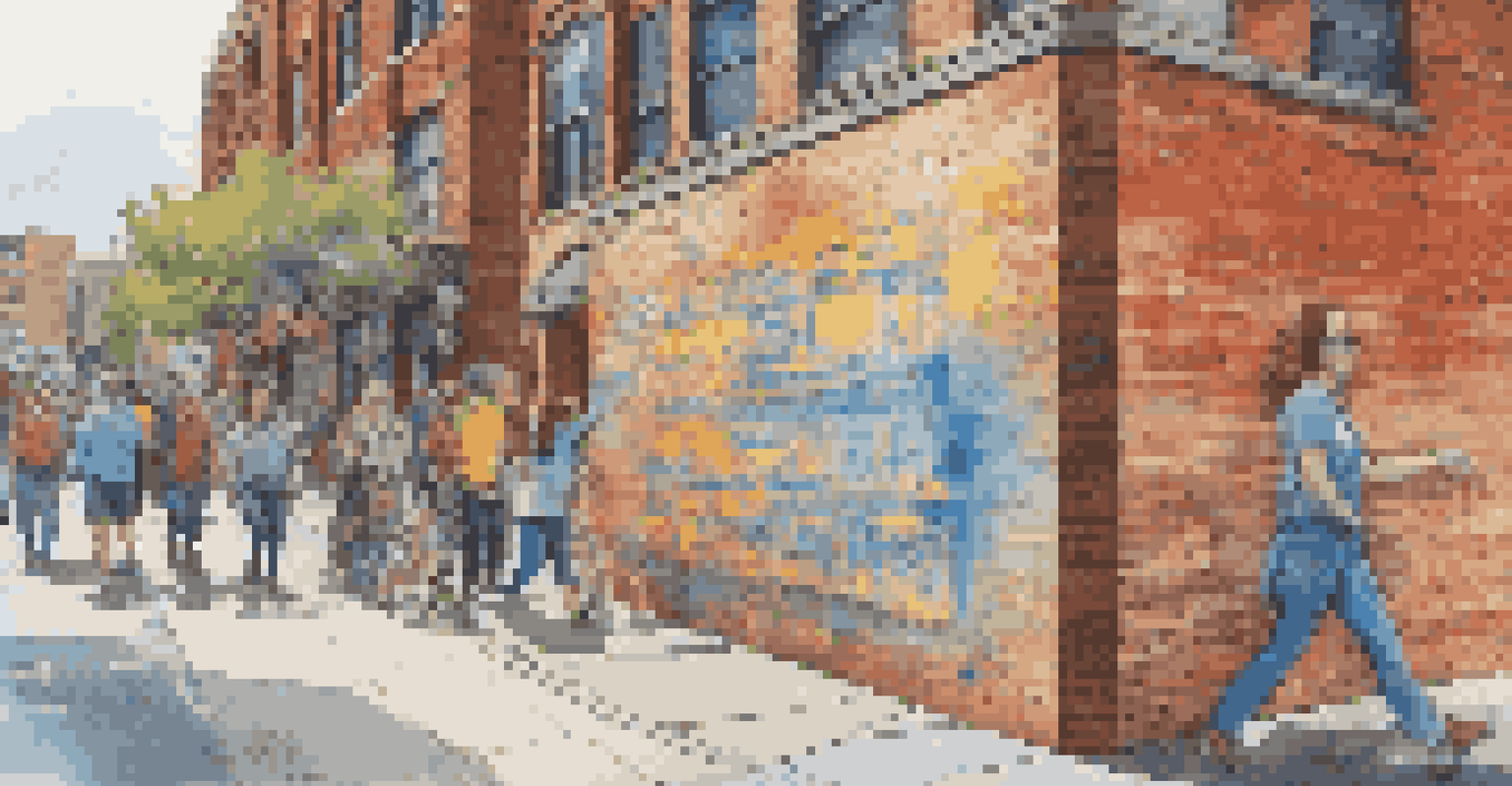The Role of Community Art in Disability Representation

Understanding Community Art and Its Significance
Community art is a collaborative process where artists work with community members to express shared experiences and values. It's not just about creating visually appealing pieces; it's about building connections and fostering a sense of belonging. This approach can be particularly transformative for marginalized groups, including individuals with disabilities, as it amplifies voices that are often overlooked.
Art enables us to find ourselves and lose ourselves at the same time.
Art has the power to reflect the diverse narratives within a community, making it an essential tool for representation. When disabled artists participate in community art projects, they can share their unique perspectives and experiences, thus challenging societal misconceptions about disability. This representation is vital for promoting understanding and empathy among community members.
Moreover, community art nurtures an inclusive environment where everyone, regardless of ability, can participate in the creative process. By engaging with community art, disabled individuals not only showcase their talents but also foster awareness and acceptance of disability in a broader context, ultimately enriching the community as a whole.
The Importance of Diverse Representation in Art
Diverse representation in art is crucial as it allows for a more comprehensive understanding of different life experiences. When disabled individuals are represented in artistic expressions, it helps to dismantle stereotypes and promote acceptance. This visibility can lead to a shift in societal perceptions, encouraging a more inclusive outlook.

Art that includes disability representation often challenges the traditional narratives surrounding disability, portraying individuals in roles that highlight their strengths and creativity. For instance, murals or installations created by disabled artists can depict themes of resilience and empowerment, inspiring others to see disability through a different lens. This shift not only benefits the artists but also the viewers who engage with their work.
Community Art Empowers Disabled Voices
Community art initiatives enable disabled artists to express their identities and challenge societal misconceptions through collaboration.
Furthermore, when communities embrace diverse artistic voices, they foster a culture of acceptance and understanding. This collective effort can enhance social cohesion and offer a supportive environment for all members, encouraging ongoing dialogue about disability and inclusion. Ultimately, diverse representation in art enriches the cultural fabric of society.
Community Art Projects Empowering Disabled Artists
Community art projects often serve as a platform for disabled artists to showcase their work and express their identities. These initiatives can take many forms, from collaborative murals to theater productions, allowing artists to engage with their communities meaningfully. By participating in such projects, disabled artists can share their stories and experiences, creating a deeper understanding of disability.
Creativity takes courage.
For example, a community mural project might invite disabled artists to contribute their designs, resulting in a vibrant piece that reflects the collective identity of the community. This not only empowers the artists but also invites community members to explore the significance of disability representation in public art. It also creates an opportunity for dialogue and connection between artists and viewers.
Additionally, these projects can help to break down barriers, allowing for the integration of disabled individuals into the broader artistic community. By fostering collaboration, community art initiatives promote mutual respect and understanding, encouraging everyone to appreciate the diverse talents present within their midst.
The Role of Art in Challenging Stereotypes
Art has a unique ability to challenge prevailing stereotypes about disability by offering alternative narratives. Many traditional representations of disabled individuals often focus on limitations or pity, which can perpetuate negative perceptions. Community art provides a space for artists to portray their realities more authentically, emphasizing their capabilities and creativity instead.
Through visual storytelling, disabled artists can confront and dismantle these harmful stereotypes. For instance, a powerful photograph series might showcase disabled individuals engaging in everyday activities, highlighting their independence and vibrancy. These artistic expressions resonate with audiences and encourage them to reconsider their preconceived notions about disability.
Diverse Representation Enhances Understanding
Incorporating diverse artistic voices fosters acceptance and promotes a broader understanding of disability within the community.
Moreover, when community members witness authentic representations of disability through art, it fosters empathy and understanding. This, in turn, can lead to more inclusive attitudes and behaviors within the community, making it essential for society to support and uplift disabled artists in their creative endeavors.
How Community Art Facilitates Dialogue on Disability
Community art serves as a catalyst for dialogue around disability, encouraging conversations that might otherwise remain unspoken. By bringing together diverse individuals through art, these projects create a platform where experiences and perspectives can be shared openly. This exchange of ideas is crucial for promoting awareness and understanding of disability-related issues.
For example, an art exhibition featuring the work of disabled artists can spark discussions about accessibility, representation, and inclusion. As viewers engage with the artwork, they may reflect on their biases and assumptions, leading to greater awareness of the challenges faced by disabled individuals. This dialogue is essential for fostering a more inclusive society.
Additionally, these conversations can inspire community action, prompting individuals to advocate for changes that support disabled individuals. Whether it's improving accessibility in public spaces or promoting inclusive practices in local organizations, the impact of community art in facilitating dialogue extends far beyond the artwork itself.
The Intersection of Community Art and Activism
Community art often intersects with activism, using creative expression to advocate for social change. For disabled individuals, art can be a powerful tool for raising awareness about their rights and issues faced within society. Through community art initiatives, artists can highlight the barriers that disabled individuals encounter, fostering a call to action among community members.
For instance, a street art campaign might address accessibility challenges in public transportation, using vibrant visuals to draw attention to the issue. This not only engages viewers but also invites them to become part of the solution, encouraging community involvement in advocacy efforts. The intersection of art and activism can amplify the voices of disabled individuals and promote systemic change.
Art as a Catalyst for Dialogue
Community art sparks essential conversations about disability, encouraging awareness and advocacy for inclusion and accessibility.
Furthermore, community art can create solidarity among disabled individuals and their allies, fostering a sense of community around shared goals. By working together on projects that address disability-related issues, participants can build relationships that strengthen their collective voice. This sense of unity is essential for driving meaningful change and creating a more inclusive society.
Future Directions for Community Art and Disability Representation
As society continues to evolve, the role of community art in disability representation will undoubtedly expand. With advancements in technology and shifting cultural attitudes, new opportunities for disabled artists to showcase their work are emerging. Virtual reality, online exhibitions, and social media platforms can help amplify these voices, reaching a broader audience.
Moreover, as communities become more aware of the importance of inclusion, we can expect to see an increase in collaborative art initiatives that prioritize disability representation. This could lead to more diverse artistic expressions that reflect the complexity of lived experiences among disabled individuals. Community leaders and organizations play a crucial role in supporting these initiatives and fostering an environment where creativity can thrive.

Ultimately, the future of community art and disability representation lies in continued collaboration and commitment to inclusivity. By embracing diverse artistic voices and promoting authentic representations of disability, communities can build a richer cultural landscape that benefits everyone. The journey toward greater inclusion and understanding is ongoing, and community art will remain a vital part of that process.